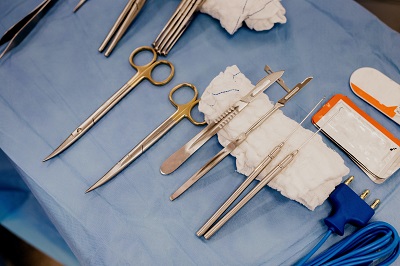Process for Class II medical device FDA certification application.
Release time:2024-08-06 11:18:17
The author:
source:
Step: Determine the correct classification of your medical device under FDA regulations (typically Class II for moderate-risk devices).
Applying for FDA certification (510(k) clearance) for a Class II medical device involves a structured process to demonstrate that the device is safe and effective. Here's a detailed step-by-step process for the FDA certification application:
Process for FDA Certification (510(k) Clearance) Application:
Device Classification and Identification of Predicate Device:
- Step: Determine the correct classification of your medical device under FDA regulations (typically Class II for moderate-risk devices).
- Purpose: Identify one or more predicate devices that are legally marketed in the U.S. and are substantially equivalent to your device in terms of intended use, technological characteristics, and performance.
Prepare 510(k) Submission:
- Step: Compile a comprehensive 510(k) submission package containing:
- Device Description: Provide a detailed description of the device, including its design, materials, components, and intended use.
- Performance Testing: Include data from performance testing to demonstrate the device's compliance with FDA standards and its equivalence to predicate devices.
- Biocompatibility Data: Submit documentation following ISO 10993 standards to ensure the device's safety.
- Software Documentation: If applicable, include documentation on software validation, functionality, and risk management.
- Clinical Data: Include clinical data if necessary to support claims of safety and effectiveness, especially if the device is significantly different from predicate devices.
- Proposed Labeling: Provide labeling that complies with FDA regulations, including indications for use, warnings, precautions, and directions for use.
- Step: Compile a comprehensive 510(k) submission package containing:
Submit 510(k) to FDA:
- Step: Electronically submit the 510(k) application through the FDA's electronic submission gateway (ESG). Ensure all required forms and documentation are included.
- Purpose: Initiate the FDA review process for clearance of your device.
FDA Review Process:
- Step: The FDA conducts a thorough review of the 510(k) submission, which includes:
- Acceptance Review: Within 15 calendar days, FDA performs an acceptance review to determine if the submission is complete. They may issue a Refuse to Accept (RTA) letter if deficiencies are identified.
- Substantive Review: FDA evaluates the submission to determine if the device is substantially equivalent to predicate devices and meets regulatory requirements. This evaluation includes technical and clinical assessments as applicable.
- Step: The FDA conducts a thorough review of the 510(k) submission, which includes:
Respond to FDA Requests:
- Step: Address any questions, requests for additional information, or deficiencies identified by the FDA during the review process. Provide clarifications or additional data as necessary.
- Purpose: Support the FDA's evaluation and demonstrate compliance with regulatory requirements.
FDA Decision:
- Step: Upon completing the review, the FDA issues a decision on the 510(k) submission:
- Clearance: FDA determines that the device is substantially equivalent and issues a 510(k) clearance letter. This allows the device to be marketed in the U.S.
- Not Substantially Equivalent (NSE): FDA issues an NSE determination if the device does not meet the substantial equivalence criteria.
- Step: Upon completing the review, the FDA issues a decision on the 510(k) submission:
Post-Clearance Activities:
- Step: After receiving FDA clearance:
- Update device labeling to include FDA clearance information.
- Implement any necessary manufacturing changes or quality system updates based on FDA feedback.
- Begin marketing and distributing the device in the U.S. market.
- Step: After receiving FDA clearance:
Key Considerations:
- Regulatory Strategy: Develop a clear regulatory strategy early in the process to guide preparation and submission efforts.
- Documentation: Ensure all documentation is complete, accurate, and well-organized to facilitate FDA review.
- Timeline: Plan for the FDA review timeline, including potential delays for additional information requests or changes to the submission.

Contact Us:
Whatsapp or Wechat:+86 15816864648;email address:hito.lin@grzan.cn
.png)
.jpg)
.png)

.png)